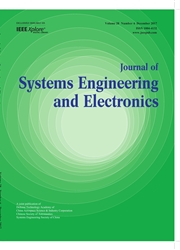

 中文摘要:
中文摘要:
<正>Remaining useful life(RUL) estimation is termed as one of the key issues in prognostics and health management (PHM).To achieve RUL estimation for individual equipment,we present a degradation data-driven RUL estimation approach under the collaboration between Bayesian updating and expectation maximization(EM) algorithm.Firstly,we utilize an exponential-like degradation model to describe equipment degradation process and update stochastic parameters in the model via Bayesian approach. Based on the Bayesian updating results,both probability distribution of the RUL and its point estimation can be derived. Secondly,based on the monitored degradation data to date,we give a parameter estimation approach for non-stochastic parameters in the degradation model and prove that the obtained estimation is unique and optimal in each iteration.Finally,a numerical example and a practical case study for global positioning system (GPS) receiver are provided to show that the presented approach can model degradation process and achieve RUL estimation effectively and generate better results than a previously reported approach in literature.
 英文摘要:
英文摘要:
Remaining useful life (RUL) estimation is termed as one of the key issues in prognostics and health management (PHM). To achieve RUL estimation for individual equipment, we present a degradation data-driven RUL estimation approach under the collaboration between Bayesian updating and expectation maximization (EM) algorithm. Firstly, we utilize an exponential-like degradation model to describe equipment degradation process and update stochastic parameters in the model via Bayesian approach. Based on the Bayesian updating results, both probability distribution of the RUL and its point estimation can be derived. Secondly, based on the monitored degradation data to date, we give a parameter estimation approach for non-stochastic parameters in the degradation model and prove that the obtained estimation is unique and optimal in each iteration. Finally, a numerical example and a practical case study for global positioning system (GPS) receiver are provided to show that the presented approach can model degradation process and achieve RUL estimation effectively and generate better results than a previously reported approach in literature.
 同期刊论文项目
同期刊论文项目
 同项目期刊论文
同项目期刊论文
 Vibration Sensor based Intelligent Fault Diagnosis System for Large Machine Unit in Petrochemical In
Vibration Sensor based Intelligent Fault Diagnosis System for Large Machine Unit in Petrochemical In A Diagnosis Method for Rotation Machinery Faults Based on Dimensionless Indexes Combined with -Neare
A Diagnosis Method for Rotation Machinery Faults Based on Dimensionless Indexes Combined with -Neare 期刊信息
期刊信息
